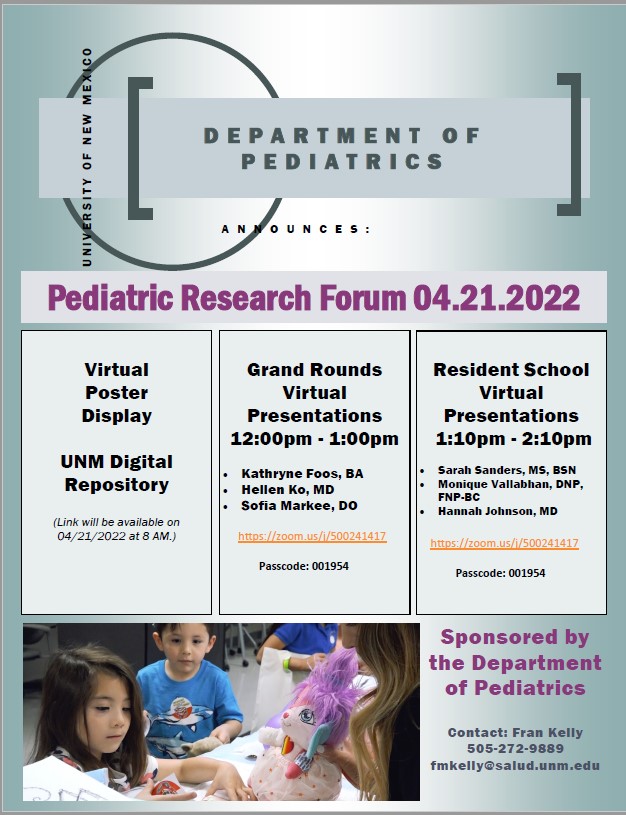
2022 Pediatric Research Forum Session
Document Type
Poster
Publication Date
4-21-2022
Abstract
Aim: To report a case of a teenager with congenital dyserythropoietic anemia (CDA). This is a 16y/o female who been noted to have mild persistent jaundice since early childhood. No history of abdominal pain, nausea or vomiting. No bleeding symptoms. Initial work up by PCP showed mild macrocytic anemia. Mom has history of jaundice of unclear etiology. O/E she has evidence of scleral icterus, no pallor and no evidence of hepatosplenomegaly. WBC 4.8K/uL, RBC 3.4 million/uL (4-5.47), H/H 11.3/34, MCV 100, MCHC 33.1, platelets 477K/uL, RDW 29.8% (11-14.5). Total bilirubin 2.8 (0.3-1.2) and indirect bilirubin 2.6 (0.2-1.0), retic 2%. Liver enzymes and iron studies normal except ferritin 216 ng/mL Peripheral smear: mildly decreased RBC; normocytic (borderline high MCV), normochromic; marked anisopoikilocytosis with elliptocytes, dacrocytes, macro-ovalocytes, microspherocytes, microcytes, rare helmet cells; mild increase in polychromasia. Hereditary hemolytic anemia panel: One copy of a pathogenic variant, c.3332_3339del; p.Arg1111ProfsTer77, and one copy of a likely pathogenic variant, c.3389C>T; p.Pro1130Leu, were detected on opposite chromosomes in the CDAN1 gene by massively parallel sequencing. One copy of a mildly pathogenic variant, (TA)7, also known as UGT1A1*28, was detected in the UGT1A1 gene by massively parallel sequencing. Discussion: CDA is a rare genetic disorder with ineffective erythropoiesis and abnormal bone marrow erythroblasts. Anemia results from dyserythropoiesis and shortened life span of RBCs. Other symptoms include intermittent jaundice, hepatosplenomegaly, cholelithiasis and iron overload. CDA should be considered if there is inadequate reticulocyte response to anemia, along with unexplained hyperbilirubinemia or iron overload. Pathogenic variants in CDAN1 are inherited in an autosomal recessive pattern and are associated with CDA IA, as in this teenager. Occasionally severe erythroid hyperplasia can cause skeletal deformities, not noted in this patient. Iron overload can be seen even in un-transfused individuals. The anemia is usually moderate with hemoglobin between 6.6-11.6 g/dL. Since this patient has mild anemia, transfusion is not indicated. The ferritin levels are closely monitored and chelation will be considered when 1000 ng/mL or higher. Other treatment options include interferon alpha and bone marrow transplant in patients with significant anemia affecting growth and development.
Recommended Citation
Abraham, Shirley M.. "Teenager with a rare congenital anemia." (2022). https://digitalrepository.unm.edu/hsc_2022_pediatric_research/16
